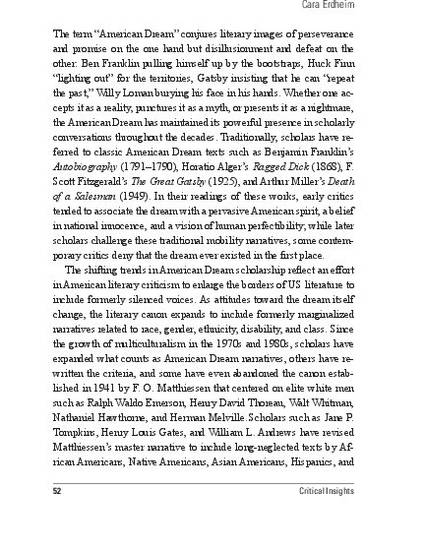
The term "American Dream" conjures literary images of perseverance and promise on the one hand but disillusionment and defeat on the other: Ben Franklin pulling himself up by the bootstraps, Huck Finn "lighting out" for the territories, Gatsby insisting that he can "repeat the past," Willy Loman burying his face in his hands. Whether one accepts it as a reality, punctures it as a myth, or presents it as a nightmare, the American Dream has maintained its powerful presence in scholarly conversations throughout the decades. Traditionally, scholars have referred to classic American Dream texts such as Benjamin Franklin’s Autobiography (1791–1790), Horatio Alger’s Ragged Dick (1868), F. Scott Fitzgerald’s The Great Gatsby (1925), and Arthur Miller’s Death of a Salesman (1949). In their readings of these works, early critics tended to associate the dream with a pervasive American spirit, a belief in national innocence, and a vision of human perfectibility; while later scholars challenge these traditional mobility narratives, some contemporary critics deny that the dream ever existed in the first place.
Available at: http://works.bepress.com/cara_erdheim/9/

Erdheim, Cara. “Why Speak of American Stories as Dreams?” Critical Insights: The American Dream. Ed. Keith Newlin. Ipswich, MA: Salem Press, A division of EBSCO Publishing, 2013, 52-67.
ISBN 978-1-4298-3821-4